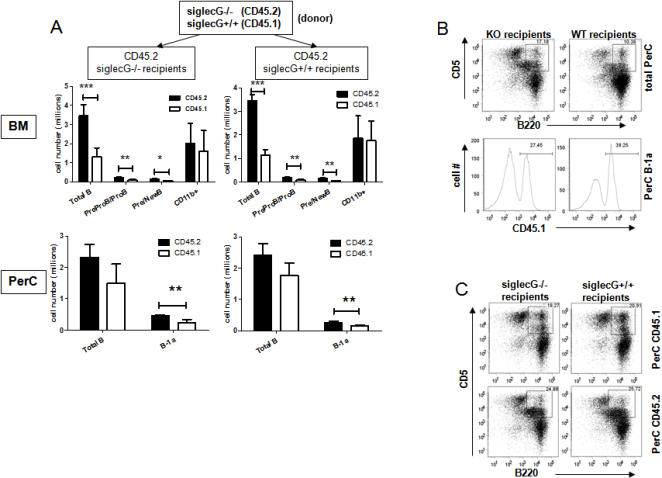Figure 4. Siglecg-deficient bone marrow cells have competitive advantages in reconstituting bone marrow B cell lineage and peritoneal B1a subsets in lethally irradiated recipients.

The WT (CD45.1) and Siglecg −/− (CD45.2) bone marrow cells were mixed at a 1∶1 ratio and used to reconstitute the lethally irradiated mice, 13 weeks later, the mice were sacrificed for analysis. The bone marrow and peritoneal lavages were analyzed by flow cytometry for reconstitution by WT and mutant bone marrow cells. A. Summary data showing the contribution of WT (open bars) and mutant bone marrow cells (filled bars). The cell subsets in bone marrow include total B cells (B220+), Pre-pro/Pro B (CD43+B220losIgM−) and pre/new B (CD43−B220+IgMlow-highIgDlow). The lower panel summarizes the total B cells and B1a B cells in the peritoneal lavages. Data shown are mean+SEM, N = 5. B. Representative profiles depicting the relative contribution of WT (CD45.1) and Siglecg-deficient (CD45.2) cells to the B1a compartment. C. Representative profiles depicting distinct profile of WT and Siglecg-deficient B1a cells.
